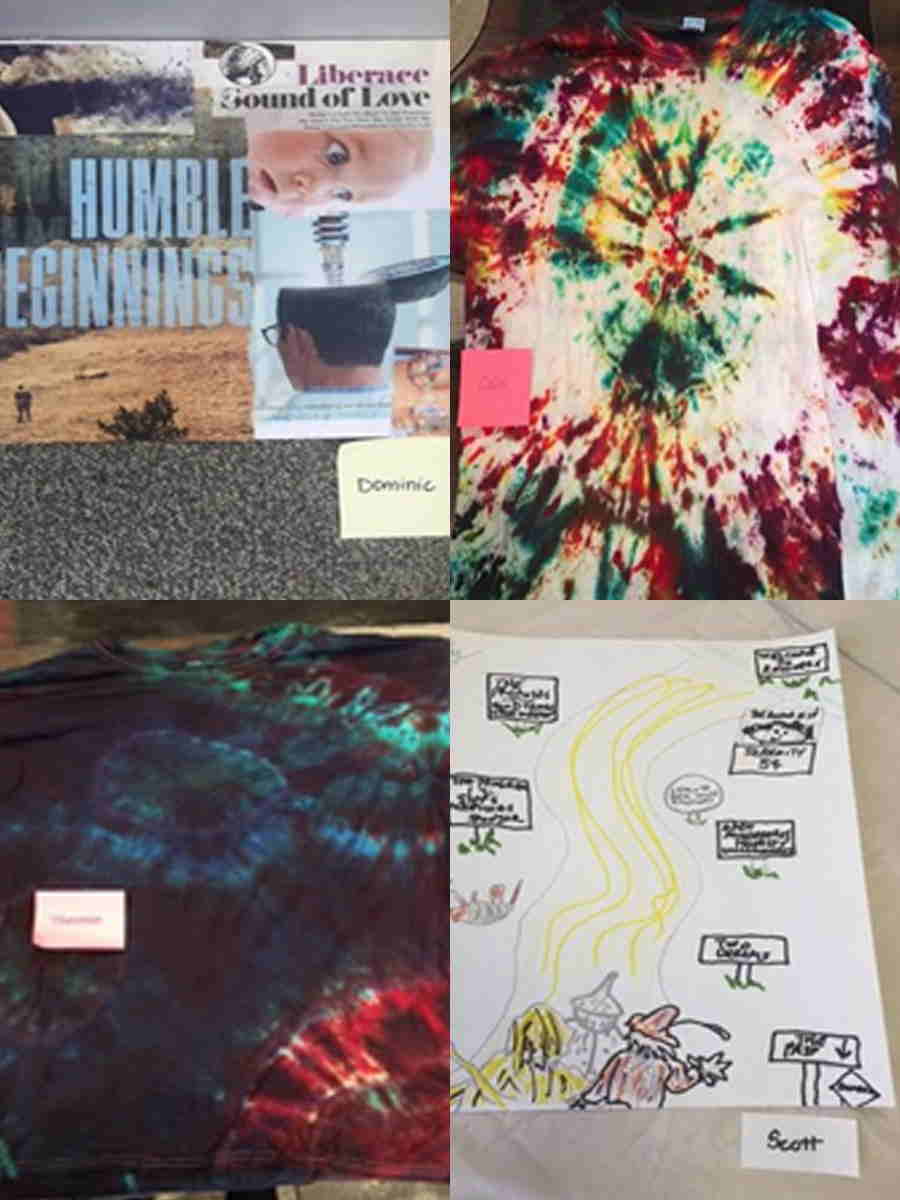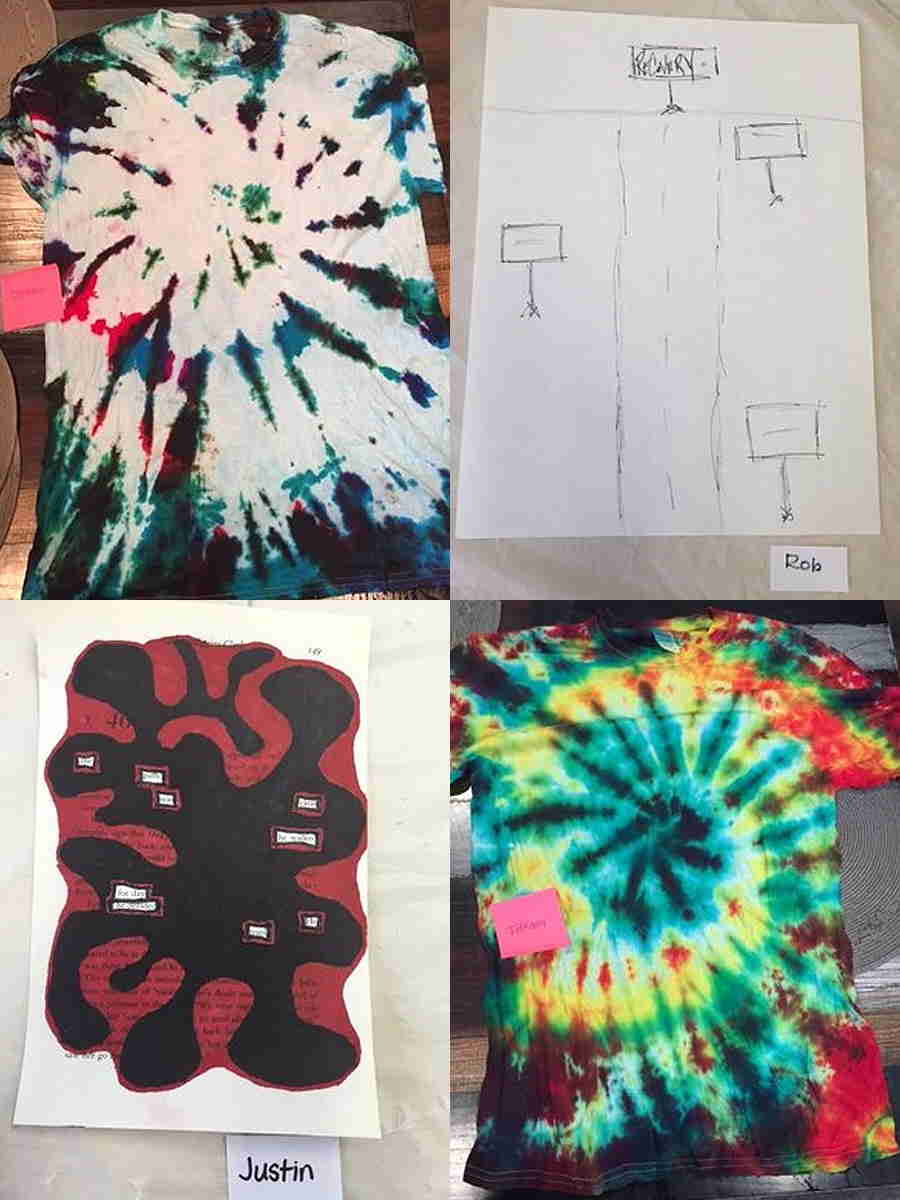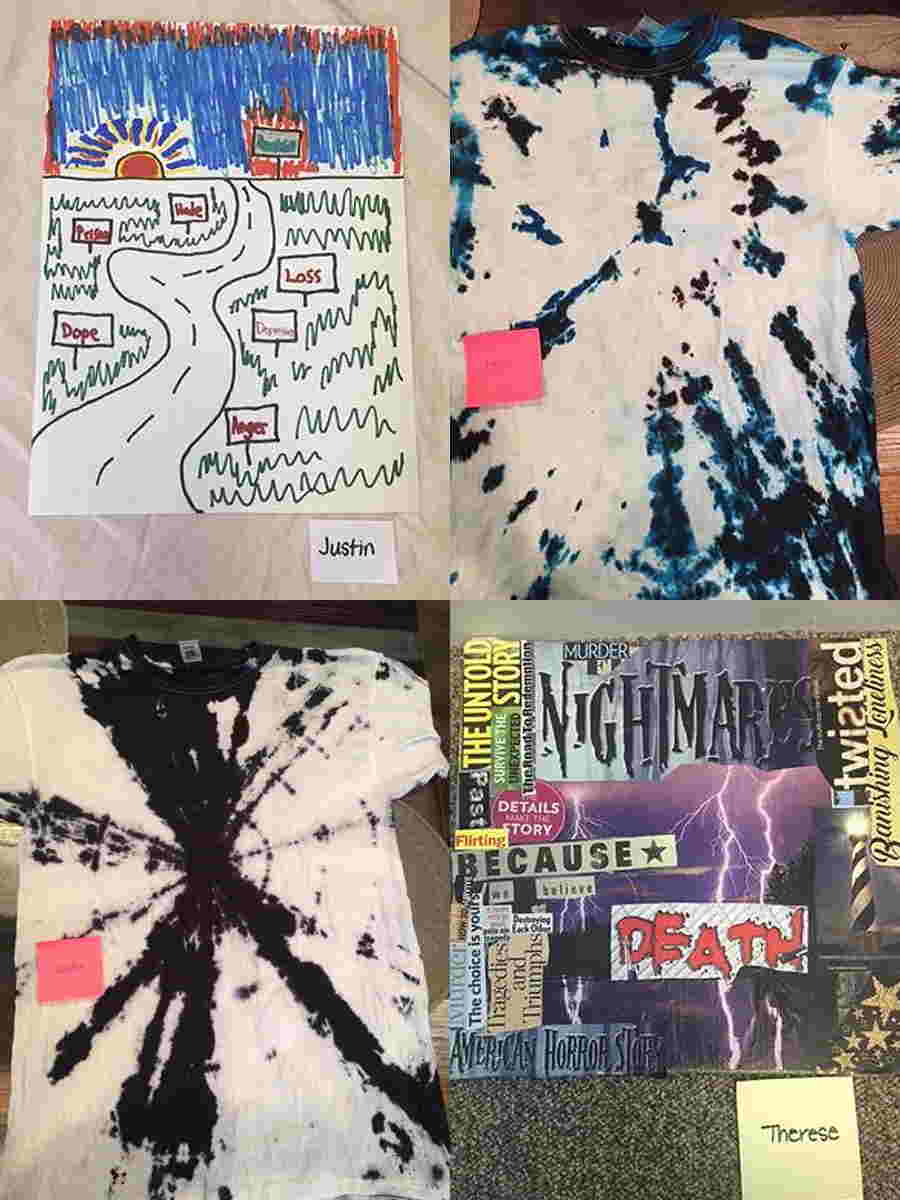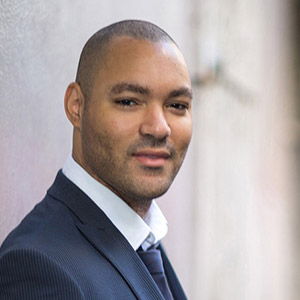Dream Journal
 Note From Dr B.
Note From Dr B.
I created the “3-7-3” philosophy as part of my commitment to holistic, evidence-based treatment that is both all-inclusive and highly effective. Patients are required to examine their progress introspectively throughout their stay at Two Dreams and spend every day working to complete the three phases of treatment via our seven dimensions of treatment. When both the patient and the staff feel that the individual has achieved the three main outcomes of recovery, mental peace, physical wellbeing, and personal productivity, they are ready to transition out of our facility.
The first few editions of the Dream Journal this year are going to focus on the first “3” of the “3-7-3” philosophy, a number that represents the three phases of treatment at Two Dreams. The three phases are a naturally occurring progression; they are not time limited, and clients can transition in and out of them depending on several clinical factors. The first phase, and the subject of this edition of the Dream Journal, is the “Coming In Phase.”
The Coming In Phase is about easing into recovery and making a conscious commitment to health and wellness. It is about establishing a feeling of safety and comfort around the staff and peers in the program in order to create a platform on which to build the recovery experience. It is about engaging in the development of healthy rituals, and building the self-confidence necessary for achievement in therapy and the following treatment phases. It is also about exploring new behaviors, as well as becoming aware of existing thought processes and coping mechanisms. Patients must embrace their stories fully and honestly, and learn to share their experiences, as difficult as that might be.
Although the Coming In Phase is introductory, it is vital to the continuation of recovery. Without embracing the self, patients cannot possibly continue the therapeutic work necessary for developing new life skills and holistic wellness. This phase is challenging of course, but our caring, professional staff is consistently able to guide patients through their obstacles and towards the end-goal of self-actualization.
Please call us today at 504-510-2331 for more information about the Coming In Phase or our treatment program in general. We look forward to speaking with you.
Sincerely,
Dr. B
Guest Writing
“And to make an end is to make a beginning” -T.S. Elliot
Oftentimes I’ve found that when I’m most uncomfortable or afraid, it has been in times of transition, times of newness, and times of unfamiliarity. However, it is in those times of transition, when we feel the intensity of intentional discomfort, that we experience growth as individuals. While transition is scary and unfamiliar, it is a necessary step in the growth process.
This is exactly where I found myself on March 28, 2016, as my wife and I started out on what ended up being a five month, 2,189 mile thru-hike of the Appalachian Trail. I had never backpacked, let alone camped for more than one night. The first night on the trail found me in my tent, shivering in the cold, mulling over self-doubt and worry in my head. After I’d put aside the ever-growing fear that I’d be eaten by a bear, I began to understand the magnitude of the task we had undertaken. Fast-forward to 9:30am on August 20, 2016. We stood proudly atop Mt. Katahdin, the northern terminus of the Appalachian Trail. While the two biggest milestones of our hike were the day we started and the day we finished, we found that the day-to-day struggle, the transitioning into the unknown, was the real victory that allowed us to grow.
In the beginning, my pride urged me to act “tough,” like I was an “experienced hiker.” It wasn’t until I became honest with myself and peeled back that facade that I was able to grow. I was encouraged by the fact that other hikers were also struggling with sleeping in wet tents, putting on dirty clothes, throwing a bear bag, and eating Ramen Noodles on a daily basis. I was able to build self-confidence on the baseline created by my willingness to be honest. Honesty allowed me to reach out to others for help, for support. My fellow hikers and I were able to establish trust with one another, based on a foundation of being honest with one another, being open to each other’s struggles and victories, and being willing to step out of our comfort zones- together.
While it would be easy to simplify the feat of thru-hiking the Appalachian Trail to the basic motor skill of walking, my success would not have been possible without accepting the basic principles of: 1) honesty with self and others, 2) open-mindedness to new ideas, and 3) willingness to step outside of normal thought processes and actions.
The beautiful thing about growth and change is that we are all capable of it. Whether hiking the Appalachian Trail, earning a college degree, fixing the engine of your car, painting a masterpiece, or choosing a life of sobriety and recovery, we are all capable. We must simply be willing to employ those simple, but meaningful principles in our times of discomfort or unfamiliarity to experience life-altering growth.
Theme Analysis As Pertains to the 12 Steps

During the Coming In phase, patients engage primarily in the first few steps of recovery. They practice the first step of acceptance in admitting that their lives have become unmanageable as a result of addiction and that treatment is necessary. They embrace self-awareness and learn to tell their story fully and honestly. They surrender to a higher power of recovery and learn to trust their peers and the treatment team. They practice the second step of hope in believing that powers greater than themselves can restore them to sanity. Hope radiates throughout the treatment center for patients in this initial phase as they learn their self-worth and potential and explore new recovery tools. Placing their hope in the healing power of new rituals and coping skills, they find self-confidence and work towards achieving mental peace, physical wellbeing, and personal productivity. In addition they explore the third step of willingness, making the decision to turn will and life over to the care of a higher power. Through process groups, they practice readiness for life’s challenges and learn to stay open to possibilities. By working these steps, they are able to complete the Coming In phase and transition to the Looking In phase, which we will discuss next month.
News Highlights
The New England Journal of Medicine published a study indicating that which physician you happen to see is significantly related to your chances of developing an opioid addiction. Doctors have different philosophies when it comes to prescribing painkillers, as there is still relatively little guidance on when and how to best utilize the drugs. The study found that patients visiting a so-called high prescriber were three times more likely to receive a prescription for opioids than patients visiting a low prescriber. No matter how you get addicted, though, we at Two Dreams believe that you have a right to treatment and we start the Coming In phase by establishing honest support and communication with our patients.
To read more about physician influence on the opioid epidemic, click here: http://time.com/4675325/doctors-opioid-epidemic/
Depression screening in primary care settings has been recommended since 2002, yet less than 5% of adults report being evaluated. Early identification and intervention are crucial for optimal outcomes, so physicians need to begin taking depression screenings seriously lest their patients face declining mental and physical health as a result. Around 13-16% of adults experience symptoms of depression during their lifetime and up to 45% of individuals who committed suicide visited a primary care provider during the last month of their life.
Click here to learn more: https://scienceblog.com/492229/depression-screening-rates-primary-care-remain-low/?utm_source=feedburner&utm_medium=email&utm_campaign=Feed%3A+scienceblogrssfeed+%28ScienceBlog.com%29
Coming In Art Therapy
As the one of the crucial and important phases of the treatment program, the patients explored the “Coming In” phase by creating the personal album cover to the memories of early recovery and designing their own unique shirt based on their creativity. Clients processed the topic of a new beginning that requires trust and acceptance in order to follow “The Road Map” of how this journey is perceived to be.
Featured Staff Member Questions: David T. Barthwell
 Q. What is your current position and job description?
Q. What is your current position and job description?
A: As Chief Technical Officer I’m responsible for managing the Two Dreams website, designing the Two Dreams brand, and developing a technical and technical security strategy for the organization.
Q. Where did you work before Two Dreams and what did you do?
A: Before coming on with Two Dreams I ran my own graphic design and web development company. I started my business when I was in high school, and still work it to this day.
Q. What has your journey been like at Two Dreams?
A: I love being able to leverage my lifelong personal interest in design and technology to help people. I very much appreciate the trust that the team at Two Dreams places in me – particularly in terms of outreach and web strategy – and I enjoy seeing the fruits of that labor paying off.
Q. What made you get into this profession?
A: Design and technology chose me! I made my first forays into the world of computer programming and graphic design when I was around 10 years old, and I’ve been working with art and computers ever since.
Q. What is the most gratifying part of your job?
A: I feel a sense of pride every time a new query comes in through our website. I know that everyone’s hard work is serving to connect people in need with the unique, quality treatment that they deserve.
Q. What do you like about the Two Dreams program?
A: We have the best treatment team in America, hands down, full stop. So many people get into treatment to hustle or make a quick buck, but that sort of attitude wouldn’t even make it through the door at our program. There is no greed here – only a zeal for treatment and a belief in helping others discover the best version of themselves. Each of our staff members brings a unique skillset to the table, and everyone cares about the work that they are doing. There’s so much pride in doing good – it’s a truly inspiring place to work.
Q. Where did you go to college and post-grad and what did you study?
A: I matriculated at Yale with a bachelors in Fine Art.
Q. How would others describe you? How does your personality complement the work you do?
A: I’m creative, curious, and a very hard worker. Staying on the cutting edge is difficult and requires the ability to be proactive rather than reactive – I feel that all three qualities come into play when seeking to develop new, innovative solutions to entrenched problems within this industry.
Q. What do you like to do when not at work? What are your favorite hobbies?
A: In my free time I love traveling, cooking, playing sports, and SCUBA diving. In my downtime I’m a voracious reader.
The Coming In Phase as it relates to the 3 P’s

As a therapist at Two Dreams Outer Banks, my primary goal is to help clients achieve their personalized vision of Physical Well-Being, Personal Productivity, and Mental Peace. Our seven dimensions of treatment are designed to facilitate change; and naturally move clients through the three Phases of Treatment which include Coming In, Looking In, and Looking Out. This month we will take a closer look at the role of the Coming In phase.
In my experience, clients who reach their treatment goals gain deep and effective feelings of safety during this phase. Safety is crucial for personal progress to occur in any therapeutic setting, but it is especially vital within addiction and mental health recovery. Many clients who come to treatment have been living in situations that have been physically unsafe, where it was not ok to express authentic emotion, and their personal power was compromised. Through abstinence, empowering and healthy rituals, consistency of staff, understanding and supportive peers, professional guidance, nutrition, exercise, and the right medication when indicated, clients begin to feel safe: safe to be themselves, safe to have their emotions validated, safe to express their pain. With an increased sense of safety, clients are able to look within themselves as well as to reach out for help to recover.
Building trust is another key component of the Coming In phase and is needed to achieve the 3 P’s, especially Mental Peace. Trust is a spiritual principle that is eroded by addiction. Clients have been unable to trust themselves as a result of being overpowered by the addiction and often losing the trust of their friends and family. Trust is rebuilt during the Coming In phase through honestly sharing with others and receiving understanding and support. Clients also begin to have more honest and authentic conversations through family therapy in order to rebuild trust with loved ones. Through healthy rituals clients learn to trust themselves and gain hope in their ability to recover.
As clients develop safety and trust in the Coming In phase, an unshakeable foundation for recovery is established.
Outer Banks Community Update
The “Coming In” phase is vital, as it sets a solid foundation for playing an active role in long-term sobriety. Each part of the “Coming In” phase directly relates to those participating in the program at Two Dreams Outer Banks.
At Two Dreams Outer Banks, the clients start establishing a sense of trust with peers and staff on day one. The clients also spend time learning how to use their peer community for feedback, suggestions and help. They stay busy participating in healthy rituals, as they adhere to a pre-planned schedule that includes process groups, a beach walk, a sun salutation, morning meditation, yoga, art group, AA/NA meetings, the gym and more. Throughout treatment at Two Dreams Outer Banks, clients are given the opportunity to learn about themselves through professional guidance and exploration of healthy behaviors and how to implement them into “everyday life”. Utilizing the many tools provided at Two Dreams Outer Banks, clients are able to gain an understanding of how to become honest with themselves and others by working the program and putting suggestions into action, while recognizing how important it is to be able tell their story in an honest, open way.
After all of the hard work each client puts forth in his or her treatment and recovery, it is important to have fun as well. This is done in a number of ways at Two Dreams Outer Banks through their weekly activities which have recently included making pottery at Glazin’ Go Nuts, visiting the aquarium on Roanoke Island, and manicures/paintball!
Chicago Update
According to the Illinois Department of Public Health, more people die each year from opioid overdoses in the state than from gun-related violence or car accidents. According to the Centers for Disease Control & Prevention, Illinois experienced a statistically significant 7.6% increase in drug overdose deaths from 2014-2015. In light of these troubling statistics, physicians across the country, especially in Chicago, are taking action. Dr. Timothy Lubenow, a pain medicine specialist at the Rush University Medical Center, specializes in using a form of spinal cord stimulation that disrupts pain signals in the nervous system. Physicians at Lurie Children’s Hospital are reducing opioid prescriptions in favor of catheters that deliver anesthetizing nerve blocks to the pain-ridden area following painful surgeries. Surgeons at the Illinois Bone & Joint Institute are beginning to use local anesthetics instead of opioids after hip and knee replacements. Researchers at Northwestern have identified the mid-frontal gyrus as being responsible for the placebo response in pain relief, which is a significant step towards being able to individualize pain management based on how that part of the brain responds to drugs in different people.
To learn more about Illinois’ efforts to better manage pain management, click here:
http://www.chicagobusiness.com/article/20170210/ISSUE01/170219984/what-if-you-could-treat-severe-pain-without-narcotics
NOLA Update
New Orleans East was hit by a multitude of destructive tornadoes this month and the damage to community property is reminiscent of Hurricane Katrina. At least seven tornadoes touched down in Louisiana. Luckily only two dozen people reported injuries and there was no loss of life. The National Guard is in East New Orleans helping to restore order to the city and its people. In times like these, it is important to remember that, although we can’t control external events, we can control how we handle ourselves during them. Take the time to volunteer this month and make the world a better place!
Source Cited:
http://www.npr.org/sections/thetwo-way/2017/02/08/514082548/its-just-a-mess-new-orleans-residents-clean-up-after-tornadoes
Thank you to our content contributors
For admissions and all staff call us at: (504) 510-2331
© 2017 Two Dreams. All Rights Reserved.

 Note From Dr B.
Note From Dr B.




 Q. What is your current position and job description?
Q. What is your current position and job description?